14.06.2018
Airbus performing Orion ESM checkout for trip to U.S. launch site
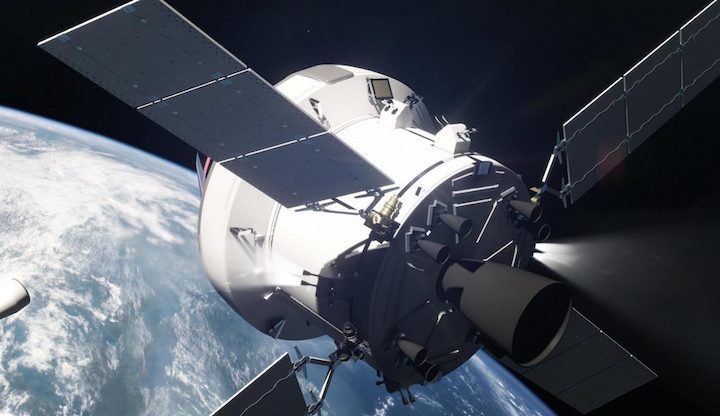
Airbus Defence and Space is in the home stretch of work to ship the first European Service Module (ESM) to its Florida launch site for integration with the rest of the hardware for NASA’s Orion spacecraft. When fully assembled and tested, Orion will be launched on the Exploration Mission-1 (EM-1) test flight to orbit the Moon and return.
ESM-1 is now undergoing subsystem functional testing at its Assembly, Integration, and Testing (AIT) facility in Bremen, Germany, following completion of most hardware that can be installed on-site. Also known as Flight Model-1 (FM-1), the module will be flown to the Kennedy Space Center this summer to begin the sequence of steps to put together the full Orion spacecraft.
As FM-1 nears completion, Flight Model-2 (FM-2) has joined its sister module in the clean room at Bremen to begin its AIT flow. NASA and the European Space Agency (ESA) are also working with prime contractor Airbus on beginning construction of ESM hardware for subsequent modules this summer.
FM-1 assembly nears completion, functional testing last major area of work
The last stretch of work prior to the shipment of FM-1 is testing, following recent installations of its four large hypergolic propellant tanks and the Orbital Maneuvering System-E (OMS-E) main engine. “The main focus that we are working on is the functional testing of the propulsion subsystem and the consumable subsystem, meaning the water and oxygen for the astronauts,” Bas Theelen, Airbus Vice President of the Orion ESM Programme, said in an interview.
“That’s really the big chunks of work still to be done, and then the shipment should be later this summer. We’re almost done with all the hardware deliveries, so there’s still one or two units to come but we have workarounds in place for those.”
“The integration — I don’t know the percentage exactly — but it is largely complete,” he added. “What we still have here and there is, of course, small issues that you find, whether there is a heater that is disconnected or the wiring of a harness that is sometimes not right but nothing major.”
“We’re working 24/7, so we have teams in place basically all day in order to make sure that we get the maximum out of the time that we still have left to deliver.”
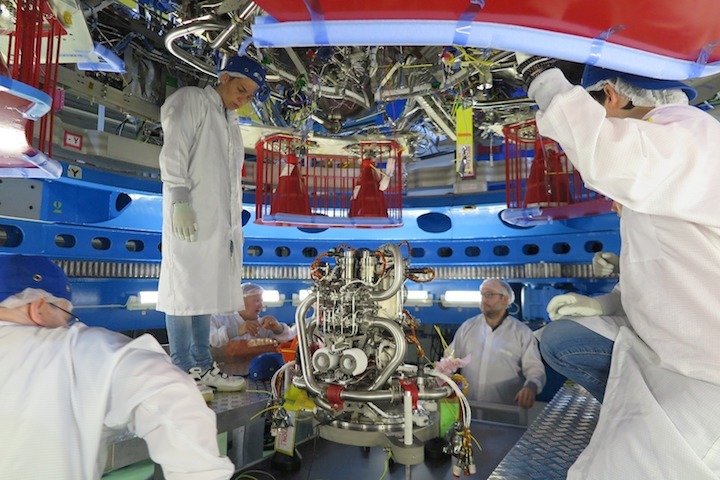
The OMS-E main engine, minus its nozzle, was installed in the bottom of the module early in May. In addition, the Consumables Storage Subsystem (CSS) hardware, consisting of two groups of two gas tanks and two water tanks, was also recently installed in the top of the module.
Installation of the propellant tanks in March and the OMS-E engine recently were major milestones in the AIT process for this first vehicle. “The reason why they are perceived as really big milestones is they are moments of no return,” Theelen explained. “If you look at the design of the ESM, it is very densely packed. It is not like a telecom spacecraft or anything like that, that you more or less can fold out to exchange one of the units.”
“On the Orion ESM, the moment you install the tanks then everything behind it is no longer reachable,” he continued, “so the big milestones in the integration were indeed installation of the tanks and also of the Space Shuttle engine, because they represent moments that you say ‘OK we are there, we have achieved what we needed to do’ and now we can basically go to the next step that does not allow us to go back anymore.”
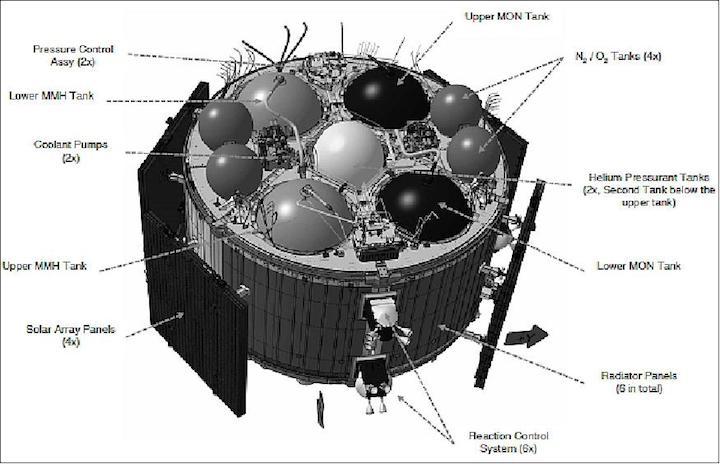
The OMS-E engine was refurbished by NASA after use during the Space Shuttle program and provided to ESA and Airbus for the ESM. “The very fact that we have everything integrated implies therefore that the majority of the work is behind us,” Theelen added.
When shipped, the ESM will be missing its solar array wings and the nozzle of the OMS-E engine. The OMS-E nozzle is already in the United States and will be attached there. The solar generators will be shipped separately to the U.S.
Installing the radiators around the outside of the module will be one of the final steps before shipment. “The moment you have those installed, you can’t reach the hardware anymore,” Theelen said. “The moment those are installed, then basically we’re done.”
As the team in Bremen nears completion of FM-1, Theelen noted he had just had an all-hands meeting with them and continues to be impressed with their dedication. “It’s very fascinating to see. I’ve been in different programs before navigation, telecom, a bit of Earth observation as well,” he noted.
“Human spaceflight — I joined one and a half years ago — though, is different. The motivation and the commitment of the people is literally astounding, because of course we’re on the critical path of the Orion program. We know that full well, so the pressure is high. At the same time, the motivation to continue, to every time give what it takes, [is high].”
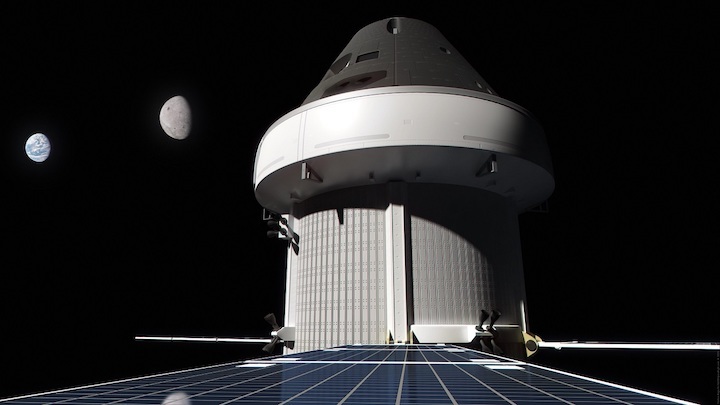
“We have our hurdles and setbacks, but people after swallowing, say ‘OK, understood — we change this and we move on,’ we continue. And that motivation is tangible in the team, also this morning again, and that’s what I find pretty impressive.”
“Recently I did speak with NASA in terms of what their opinion was in terms of the technical performance, the way we work, and there it’s understood that we’re doing everything we can to deliver, the quality of what we deliver is good, and the motivation of the people is much appreciated,” he added.
Subassembly functional testing ahead of full spacecraft integration and tests
The ESM has multiple subsystems; in addition to the physical structure, there are subsystems covering propulsion, electrical power, thermal control, consumables, and avionics. The functional testing being done in Bremen now covers mainly the propulsion and consumables areas. Most of the other subsystems have more dependencies on equipment that Orion prime contractor Lockheed Martin is assembling in the crew module and crew module adapter that are being assembled in Florida.
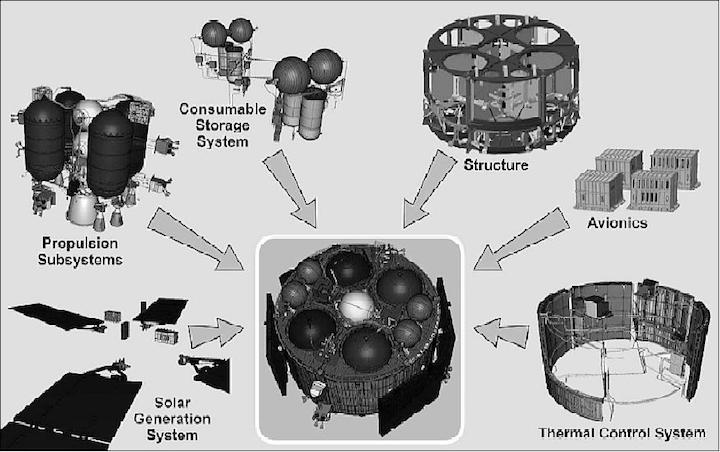
“We’ll test everything that we can do here,” Theelen explained. “The number one subsystem is the propulsion subsystem and in reality you can say that the entire ESM design is built around the propulsion subsystem which itself is driven by the Space Shuttle engine. So we can test the entire propulsion subsystem here and that’s the functional test that we’re doing and there’s no interruption/interface between us and the crew module.”
“When you look at the avionics subsystem, that’s a different story. We don’t have the onboard computer. That is the responsibility of Lockheed Martin, it’s located in the crew module adapter. So that’s one [where] we cannot do a full avionics subsystem test. Of course we can work with a simulator and we do that, but we cannot — to the fullest extent — test that one.”
“[With] the power subsystem, we of course have the solar arrays, but we don’t have the batteries,” he continued. “So that implies that — if you’re looking at a typical power subsystem — the battery you can of course to some extent simulate.”
“For the power subsystem here what we do have is the power control distribution unit (PCDU) for the ESM, so if you look at the solar array including of course the solar array drive mechanism, the solar array drive electronics and the PCDU, that’s a pretty major part of the entire power subsystem, but it is not one-hundred percent complete.”
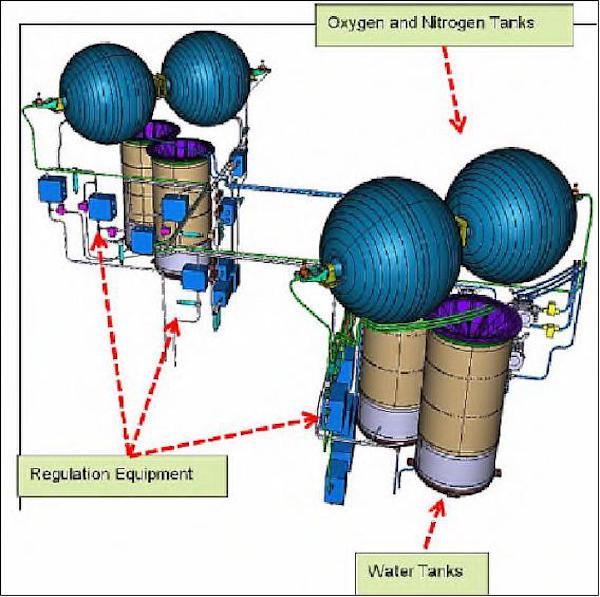
The CSS consists of four gas tanks that can be loaded with oxygen and nitrogen for crew cabin atmosphere and four water tanks. EM-1 is the first integrated flight for the Orion spacecraft, but it is an uncrewed test. To save some schedule time, Theelen noted that the ESM for this mission would only have one gas tank loaded with nitrogen and one loaded water tank. The others will be mass simulators.
“If you go to the consumable subsystem, there again the entire subsystem is with us,” he said. “There we can do the functional testing, at least for the part that we provide, but by definition of course when you look at the consumable subsystem there’s of course an interface to the crew module and we don’t have here an interface that represents the full functionality of each of those subsystems that interface with major functions that are inside the crew module.”
Shipment to Florida in the summer
When the module is ready to go, it will be flown in a large cargo airlifter from Bremen to Florida. “We will ship with an Antonov, with a big container,” Theelen noted. “We will also ship part of the ground support equipment of course because especially the electronics, the ground support equipment has to be in the U.S., as well.”
Airbus will have a support staff on-site in Florida and others remotely available. “There’s about twenty [people on-site], but it depends on which phase of the testing we’re in,” he said.
“[Once] the ESM is shipped there, you get the normal unpacking procedures [and the] incoming inspection. Very soon afterwards there will be an integration readiness review with the crew module adapter in which the remainder of the power and avionics subsystems are located. There of course, we are present.”
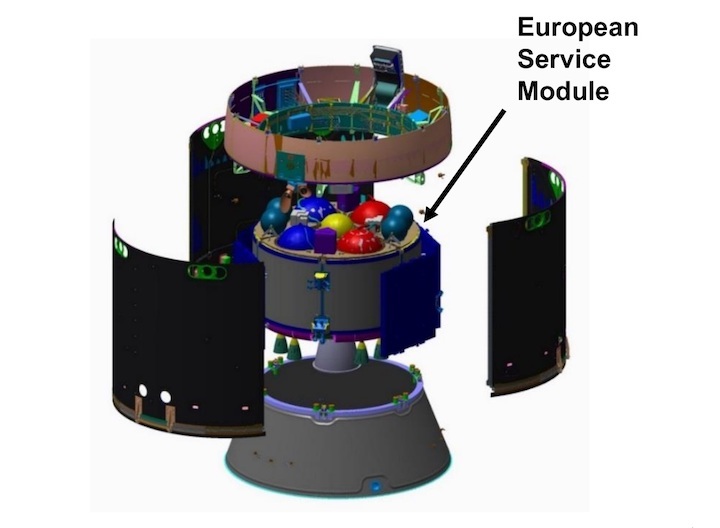
“There will be moments of course where there will be dedicated tests for which we will have to fly in specialists on a case-by-case basis,” he continued. “The moment you do the power subsystem testing for the entire spacecraft of course our people have to be there. The moment you do the functional testing of the propulsion subsystem together with the crew module, then of course our propulsion people will be there.”
“When we start doing the overall spacecraft mechanical testing, vibration, etcetera, we will send our people in. So we will have a core team that will be there permanently and on a case-by-case basis we will have our specialists present.”
“And then of course we have the normal back-office support of people here, by definition, that can always be asked for when needed. They will always be in Bremen, so there will always be the Bremen team in the background. There’s a time zone difference, but you have to be there when anything happens and we’ll be there on-site.”
At KSC, the ESM will first be attached to the crew module adapter and checked out before the crew module is brought in to be integrated.
FM-2 AIT underway, building on lessons learned
While work in Bremen on the first ESM is nearing completion, the structure for the second unit has moved into the same clean room. Built by Thales Alenia Espace in Turin, Italy, the structure was transported to Bremen in late April, and is now beginning its AIT flow for eventual service on Exploration Mission-2 (EM-2), the first crewed Orion flight.
“On the lower level, the normal preparation, all the work has started,” Theelen said. “We’re waiting for the other major deliveries and some of them we haven’t received yet, but you can do all the bracket mounting, the harness mounting, all that kind of preparation.”
“There’s about 11000 meters of cables in there, so there’s a lot of work that you can prepare already, especially now that you have [that work on] FM-1 already behind.”
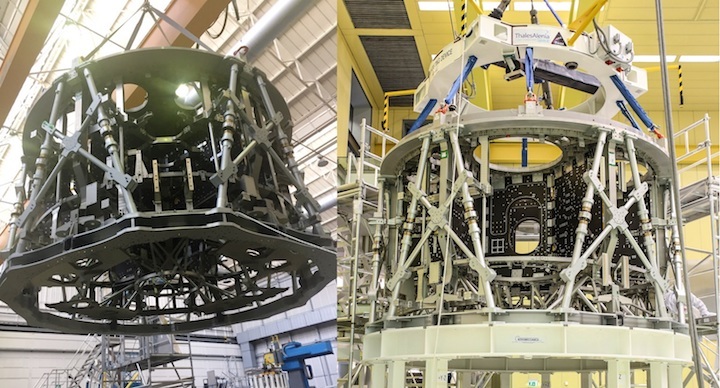
Lessons learned during the first AIT flow are being incorporated by the team as they go. “Basically I’ve only got one team, I don’t have two teams,” Theelen explained. “The AIT manager for the second one is sitting the same office, sitting right next to the AIT manager for ESM-1. So there’s one thing.”
“The other thing is, if you look at the lessons learned, and of course as we go we discover stuff that we didn’t expect or things don’t go exactly as planned, those are being captured in a special lessons learned database to make sure that they are available and used for ESM-2.”
Theelen noted, though, that the design drives the sequence of events in the flow. “The particular thing about the entire ESM is — and I come back to that — the design is such that it is extremely compact,” he explained.

